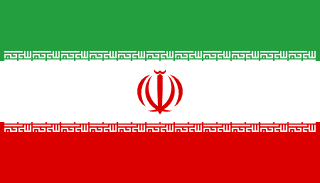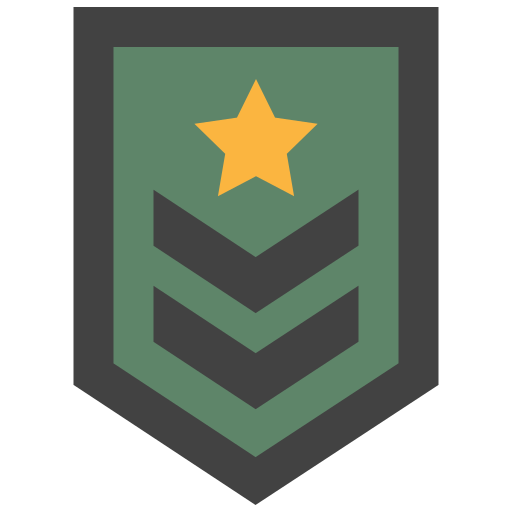Iran - Government

National symbols
Lion; national colors: green, white, red.
The flag
The National Anthem
| Title | "Soroud-e Melli-ye Jomhouri-ye Eslami-ye Iran" (National Anthem of the Islamic Republic of Iran) |
|---|---|
| Lyric/music | multiple authors/Hassan RIAHI |
note 2: a recording of the current Iranian national anthem is unavailable since the US Navy Band does not record anthems for countries from which the US does not anticipate official visits; the US does not have diplomatic relations with Iran
More about the government of Iran
| Date of Independence | 1 April 1979 (Islamic Republic of Iran proclaimed); notable earlier dates: ca. 550 B.C. (Achaemenid (Persian) Empire established); A.D. 1501 (Iran reunified under the Safavid Dynasty); 1794 (beginning of Qajar Dynasty); 12 December 1925 (modern Iran established under the PAHLAVI Dynasty) |
|---|---|
| National holiday | Republic Day, 1 April (1979) |
| Legal system | religious legal system based on secular and Islamic law |
| International law organization participation | has not submitted an ICJ jurisdiction declaration; non-party state to the ICCt |
| Constitution | |
| History | Previous 1906; latest adopted 24 October 1979, effective 3 December 1979 |
| Amendments | Proposed by the supreme leader – after consultation with the Exigency Council – and submitted as an edict to the "Council for Revision of the Constitution," a body consisting of various executive, legislative, judicial, and academic leaders and members; passage requires absolute majority vote in a referendum and approval of the supreme leader; articles including Iran’s political system, its religious basis, and its form of government cannot be amended; amended 1989 |
| Citizenship | |
| Citizenship by birth | no |
| Citizenship by descent only | the father must be a citizen of Iran |
| Dual citizenship recognized | no |
| Residency requirement for naturalization | 5 years |
| Executive Branch | |
| Chief of state | Supreme Leader Ali Hoseini-KHAMENEI (since 4 June 1989) |
| Head of government | President Masoud PEZESHKIAN (assumed office on 30 July 2024) |
| Cabinet | Council of Ministers selected by the president with legislative approval; the supreme leader has some control over appointments to several ministries |
| Elections/appointments | supreme leader appointed for life by Assembly of Experts; president directly elected by absolute majority popular vote in 2 rounds if needed for a 4-year term (eligible for a second term and an additional nonconsecutive term); election last held on 28 June 2024 first round (runoff held on 5 July 2024) |
| Election results | 2024: first round results - Masoud PEZESHKIAN (independent) 44.4%, Saeed JALILI (Front of Islamic Revolution Stability) 40.4%, Mohammad Baqer QAKIBAF (Progress and Justice Population of Islamic Iran) 14.3%, other 0.9%; second round results - Masoud PEZESHKIAN elected; Masoud PEZESHKIAN 54.8%, Saeed JALILI 45.2% 2021: Ebrahim RAISI elected president; percent of vote - Ebrahim RAISI (independent) 72.4%, Mohsen REZAI (RFII) 13.8%, Abbdolnaser HEMATI (ECP) 9.8%, Amir-Hosein Qazizadeh-HASHEMI (Islamic Law Party) 4% |
| Legislative branch | |
| Legislature name | Islamic Parliament of Iran (Majles Shoraye Eslami) |
| Legislative structure | Unicameral |
| Number of seats | 290 (all directly elected) |
| Electoral system | Plurality/majority |
| Scope of elections | Full renewal |
| Term in office | 4 years |
| Most recent election date | 3/1/2024 to 5/10/2024 |
| Percentage of women in chamber | 4.8% |
| Expected date of next election | February 2028 |
| Judicial branch | |
| Highest court(s) | Supreme Court (consists of the chief justice and organized into 42 two-bench branches, each with a justice and a judge) |
| Judge selection and term of office | Supreme Court president appointed by the head of the High Judicial Council (HJC), a 5-member body to include the Supreme Court chief justice, the prosecutor general, and 3 clergy, in consultation with judges of the Supreme Court; president appointed for a single, renewable 5-year term; other judges appointed by the HJC; judge tenure NA |
| Subordinate courts | Penal Courts I and II; Islamic Revolutionary Courts; Courts of Peace; Special Clerical Court (functions outside the judicial system and handles cases involving clerics); military courts |
| Diplomatic representation in the US | |
| Diplomatic representation from the US | |
| Embassy | None; the US Interests Section is located in the Embassy of Switzerland; US Foreign Interests Section, Embassy of Switzerland, Pasdaran, Shahid Mousavi Street (Golestan 5th), Corner of Paydarfard Street, No. 55, Tehran |
| National heritage | |
| Total World Heritage Sites | 28 (26cultural, 2 natural) |
| Selected World Heritage Site locales | Persepolis (c); Tchogha Zanbil (c); Bam and its Cultural Landscape (c); Golestan Palace (c); Shushtar Historical Hydraulic System (c); Pasargadae (c); Hyrcanian Forests (n); Tabriz Historic Bazaar Complex (c); Meidan Emam, Esfahan (c); Bisotun (c); Takht-e Soleyman (c); Soltaniyeh(c); Bisotun (c); Armenian Monastic Ensembles of Iran(c); Sheikh Safi al-din Khānegāh and Shrine Ensemble in Ardabil (c); The Persian Garden (c); Gonbad-e Qābus (c); Masjed-e Jāmé of Isfahan (c); Shahr-i Sokhta (c); Cultural Landscape of Maymand (c); Susa (c); Lut Desert (n);The Persian Qanat (c); Historic City of Yazd (c); Sassanid Archaeological Landscape of Fars Region (c); Cultural Landscape of Hawraman/Uramanat (c); Trans-Iranian Railway (c); The Persian Caravanserai (c); Hegmataneh (c) |
Key Political parties and their leaders in Iran
International organization participation
All Important Facts about Iran
Want to know more about Iran? Check all different factbooks for Iran below.









